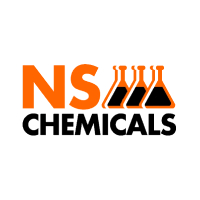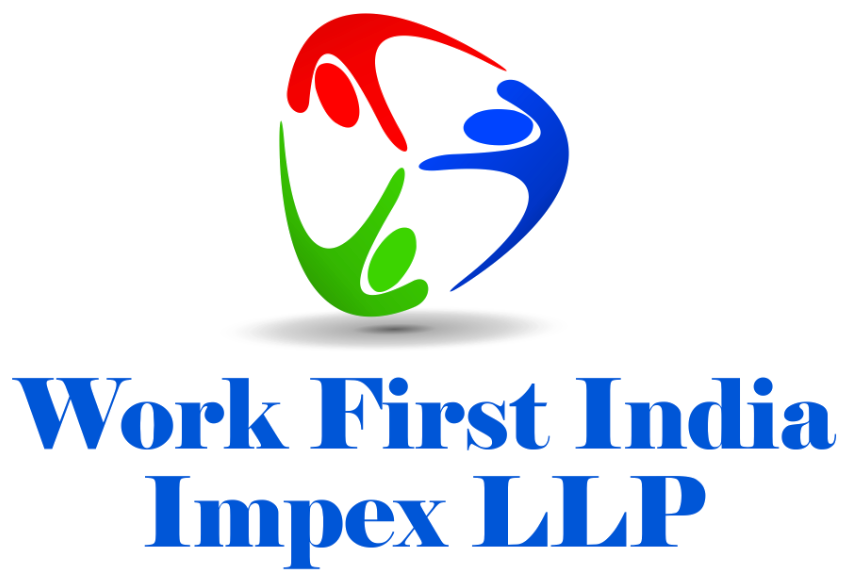Certificate of origin
Certificate of origin | Types, Procedure and Fees
A Certificate of Origin is an important document used in international trade. It tells where a product was made or manufactured. This certificate is usually prepared by the exporter and is required by customs authorities in the importing country. It helps confirm that the goods being imported come from a particular country and are allowed to enter under trade agreements or special conditions. There are two main types of Certificates of Origin: Preferential and Non-Preferential. A Preferential Certificate of Origin is used when goods are eligible for reduced or zero customs duties under a trade agreement between two or more countries. A Non-Preferential Certificate of Origin simply states the origin of the goods but does not provide any special tariff benefits.
This certificate is important because many countries have different import rules, duties, and taxes depending on where the goods are coming from. It also helps avoid delays at customs and ensures smooth shipment.
In India, Certificates of Origin are issued by authorized bodies such as the Chambers of Commerce, Export Promotion Councils, or other government-approved agencies. Exporters must submit the correct documents and follow the rules to get the certificate. Overall, a
Certificate of Origin plays a key role in the success of international trade.
Table of Content
- What is Certificate of Origin?
- Types of Certificate of Origin
- Registration fee for certificate of origin
- Process of registration for COO
- Eligibility for COO
- Benefits of Certifciate of origin
- Conclusion
- Frequently Asked Questions (FAQs)

Online Registration Process for ISCECA Certificate, Fees & Documents
The ISCECA Certificate is a Certificate of Origin issued by the Directorate General of Foreign Trade (DGFT) in India. This certificate ensures that the commodity that is meant to be exported is fully and authentically manufactured or produced in the originating country, which is India in this case, or the respective exporting country. In order to properly verify the goods, the exporter must adhere to regulatory procedures and submit multiple essential documents to the DGFT authorities to prove that the goods have been completely and legitimately manufactured in India. These documents typically include detailed records of
manufacturing processes, raw material sources, and various production processes undertaken before final dispatch.
The necessity of obtaining a Certificate of Origin arises primarily to facilitate customs clearance in the designated importing country. In case the goods being imported into the destination country do not have a valid Certificate of Origin, the customs authorities of the importing country may impose higher taxes or additional duties on the goods as per their tariff policies. The Certificate of Origin serves as an important trade document, ensuring that the products qualify as duty-free and originate from a country that has an established free trade agreement with the importing nation. Additionally, it helps in safeguarding the interests of both countries by ensuring proper adherence to trade regulations, promoting transparency, and facilitating smoother international trade transactions.
What is Certificate of Origin?
A Certificate of Origin is an official document that proves the country where a product was made or manufactured. It is used in international trade when goods are exported from one country to another. This document is important because many countries have different import rules, taxes, and benefits depending on where the product comes from.
In short, a Certificate of Origin helps to show where a product was made and is an essential part of the export process.
Types of Certificates of Origin
The forms for certificates of origin (COOS) used in global trade are not standardized. However, it typically includes essential information about the shipped product, such as a tariff code, details of the exporter and importer, and the country of origin.
Non-Preferential Certificate of origin :
Non-preferential certificate of origin indicates that the goods being exported do not qualify for reduced tariffs or tariff-free treatment under any trade agreements between countries.If an exporting country does not have a treaty or trade agreement in place with the importing country, an ordinary COO is required. Additionally, if a specific product being shipped has been excluded from tariff relief, it must be declared using an ordinary COO.
Preferential Certificate of origin :
Preferential Certificates of origin indicate the existence of a free trade agreement or reduced tariffs between countries. For example, exports between SAFTA countries of India-UAE trade agreement.
Documents required for Certificate of origin
These are the list of documents required to procure certificates of origin for respective free trade agreements.
- Digital signature certificate
- Import export Code
- Mobile No & Email Address
- Commercial Invoice
- Purchase bill with respective details
- Manufacturer exporter declaration
- Product description
- Purchase order from importer
Registration fee for Certificate of origin
The fee required for the COO registration is 3,208 rupees, including our professional fees. The registration will be valid for up to 12 months from the date of issuance.
Exporters can apply for re-issuance of the certificate of origin once the validity period has expired.
| Particulars | Fees |
|---|---|
| Government Fee | ₹ 708 |
| Application Fee | ₹ 2000 |
| One time registration fee | ₹ 500 |
| Total Fee | ₹ 3208 |
| Validity of COO | 12 months from the date of issuance |
GET EXPERT CONSULTATION
Registration process for Certificate of origin
The registration process for a Certificate of Origin is as follows, designed to ensure smooth and efficient verification of your goods’ origin for international trade. Here’s a step-by-step guide to help you navigate the process with ease:
1 – Account ID creation:- An account will be created on the DGFT portal with DSC or any other authorized government portal to apply for certification. 2- Documentation:- An applicant must provide valid information and required documents with the application to prove the origin of their products.
3 – Verification & authorization: The issuing authority will assess and conduct a full inspection through a risk management system to verify & authenticate the origin of the Product.
4 Certification:- Once the approval is granted after the verification & inspection. Authorities will issue the certificate of origin to the respective applicants. As per agreed rules under the cepa agreement. The certificate of origin registration must be in English language only. The issued certificate must have all the required details about the Product and the exporting entity.
Product categorisation under Certificate Of Origin
If the Product meets the following criteria, it will be considered to have come from a contracting nation and be eligible for preferential treatment. Wholly obtained Or Produced Products such as
1. Live animals
2. Agri products
3. Products made of animals
4. Products made of Marine animals
5. Products made of natural resources
6. Product produced in the territory of the country exclusively
7. Products have undergone sufficient working or production according to the Product Specific Rules.
Note:- Exporters are required to furnish a certificate of origin for their products in order to verify their authenticity in accordance with the agreed trade agreement among the involved parties.
Benefits of Certificate of origin
The Certificate of Origin offers several key benefits, making it an essential document in international trade:
• Tariff Reduction: The certificate of origin helps exporters qualify for preferential tariff rates or duty exemptions under trade agreements or preference programs. This reduces the cost of importing goods and enhances competitiveness in foreign markets.
• Compliance with Import Regulations: Many countries have specific import regulations, including labeling, packaging, or safety standards. The certificate of origin provides necessary information to demonstrate compliance with these requirements, ensuring smooth customs clearance and avoiding potential trade barriers.
• Access to Trade Benefits: Some trade agreements or programs may offer additional benefits beyond tariff reduction, such as access to government incentives, subsidies, or quotas. The certificate of origin serves as proof of eligibility for these benefits.
• Authenticity and Traceability: The certificate of origin establishes the authenticity of the goods origin, providing transparency and traceability in supply chains. It helps combat counterfeiting, intellectual property infringements, and unauthorized transshipment.
• Trade Data Collection and Analysis: Certificates of origin contribute to trade data collection, enabling authorities to track and analyze trade flows. This data helps monitor market trends, evaluate the effectiveness of trade policies, and formulate strategies for economic development.
Other Free Trade AGREEMENT |
India has enhanced its market access commitments for neighbouring service providers. These commitments provide companies with an opportunity to build market expertise and grow by international expansion. Under Free or Preferential Trade Agreement there are multiple options where certificate of origin can be generated from India for import benefits to importing companies:-
ICPTA – India Chile Preferential Trade Agreement
SAFTA – South Asia Free Trade Agreement
SAPTA – SAARC Preferential Trade Agreement
IKCEPA – India Korea Comprehensive Economic Partnership Agreement
IJCEPA – India Japan Comprehensive Economic Partnership Agreements AIFTA-ASEAN India Free Trade Agreement
ISFTA – India Sri Lanka Free Trade Agreement
APTA-Asia Pacific Trade Agreement
GSP-Generalized System of Preferences
GSTP – Global System of Trade Preferences
IMCECA – India Malaysia Comprehensive Economic Cooperation Agreement
ISCECA – India Singapore Comprehensive Economic Cooperation Agreement
Conclusion
A Certificate of Origin is a key document in the export process that confirms the manufacturing country of goods. It ensures that international trade follows proper rules and helps importers and customs authorities apply the correct duties and benefits. Whether it is a preferential or non-preferential certificate, providing accurate information is important to avoid delays and legal issues. For exporters, getting the Certificate of Origin from an authorized body is necessary for international trade. If you are an exporter and need a Certificate of Origin, Professional Utilities can help you easily get it. They assist with preparing the documents and getting approval from authorized bodies like the Chambers of Commerce or Export Promotion Councils.
Why Professional Utilities?
At Professional Utilities, we leverage our industry knowledge and expertise to help businesses navigate complex regulations, minimize risks, and optimize operations for maximum efficiency and profitability.
- One Stop Corporate Solution
- PAN India Services
- Free Expert Assistance
- Dedicated Support Staff
- Google Verified Business
- Money-Back Guarantee
TRUSTED BY |






Frequently Asked Questions (FAQs)
A Comprehensive Economic Partnership Agreement (CEPA) or Comprehensive Economic Cooperation Agreement (CECA) is different from a traditional (FTA) Free Trade Agreement in two ways.
Firstly, CEPA or CECA are more comprehensive and ambitious than an FTA in terms of coverage of areas and the type of commitments. While a traditional Free Trade Agreement focuses mainly on goods; a CECA/CEPA is more ambitious in terms of a holistic coverage of many areas like services, investment, competition, government procurement, disputes etc.
Secondly, CEPA/CECA looks deeper at the regulatory aspects of trade than a Free Trade Agreement. It is on account of this that it encompasses mutual recognition agreements that cover the regulatory regimes of the partners. An MRA recognises different regulatory regimes of partners on the presumption that they achieve the same objectives.
Countries negotiate Free trade Agreements for a number of
reasons:
• By eliminating tariffs and some non-tariff barriers Free trade Agreement partners get easier market access into one another’s markets. Countries negotiate FTA’s for a number of
reasons.
• Exporters prefer Free trade Agreement’s to multilateral trade liberalization because they get preferential treatment over non- Free trade Agreement member country competitors. For Instance in the case of ASEAN, ASEAN has a Free trade Agreement with India but not with Canada. ASEAN’s custom duty on leather shoes is 20% but under the Free trade Agreements with India it reduced duties to zero. Now assuming other costs being equal, an Indian exporter, because of this duty preference, will be more competitive than a Canadian exporter of shoes. Secondly, Free trade Agreement’s may also protect local exporters from losing out to foreign companies that might receive preferential treatment under other FTAs.
• Possibility of increased foreign investment from outside the Free trade Agreement. Consider 2 countries A and B having a Free trade Agreement. Country A has a high tariff and large domestic market. The firms based in country C may decide to invest in country A to cater to A’s domestic market. However, once A and B sign a Free trade Agreement and B offers a better business environment, C may decide to locate its plant in B to supply its products to A.
• Such occurrences are not limited to tariffs alone but it is also true in the case of non-tariff measures. Especially when a Mutual Recognition Agreement (MRA) is reached between countries A and B. Some experts are of the view that slow progress in multilateral negotiations due to complexities arising from a large number of countries to reach a consensus on polarizing issues, may have provided the impetus for FTA’s.
Possibility of increased foreign investment from outside the Free trade Agreement. Consider 2 countries A and B having a Free trade Agreement. Country A has a high tariff and large domestic market. The firms based in country C may decide to invest in country A to cater to A’s domestic market. However, once A and B sign a Free trade Agreement and B offers a better business environment, C may decide to locate its plant in B to supply its products to A.
• Such occurrences are not limited to tariffs alone but it is also true in the case of non-tariff measures. Especially when a Mutual Recognition Agreement (MRA) is reached between countries A and B. Some experts are of the view that slow progress in multilateral negotiations due to complexities arising from a large number of countries to reach a consensus on polarizing issues, may have provided the impetus for FTA’s.
India has preferential access, economic cooperation and Free Trade Agreements (FTA) with about 54 individual countries. India has signed bilateral trade deals in the form of Comprehensive Economic Cooperation Agreement (CECA) / Comprehensive Economic Partnership Agreement (CEPA) / Free Trade Agreement / Preferential Trade Agreements (PTAs) with some 18 countries. India is a late & cautious, starter in concluding comprehensive PTA covering substantially all trade with some of its trading partners.
Country of origin / Rules of origin (ROO) are the criteria needed to determine a product for purposes of international trade. Their significance is derived from the fact that duties & restrictions in several cases depend upon the source of imports. Rules of origin are used:
⚫ to implement measures and instruments of commercial policy such as antidumping duties and safeguard measures;
⚫ to determine whether imported products shall receive most- favored-nation (MFN) treatment or preferential treatment;
⚫ for the purpose of trade statistics;
⚫ for the application of labeling and marking requirements; and
⚫ for government procurement.
The criteria in the (ROO) rules of origin sets out specific & detailed conditions on the level of processing that an imported item from a non Free Trade Agreement partner country must undergo in the Free Trade Agreement partner country (or other eligible countries in the region) before being eligible to be called an originating product of a Free Trade Agreement partner country. Some of the common standards used are:-
⚫ change in tariff class (this could be at the tariff chapter, tariff
heading or tariff sub heading level)
⚫ regional value addition
⚫ substantial processing or manufacturing by excluding some
minimal operations.
The authorized agencies in India for issuing the certificate of origin are listed in Appendix 35 of the Handbook of Procedures Vol-1 under the Foreign Trade Policy.
These are:
| Agreement | Agencies authorized to issue Certificate of Origin |
|---|---|
| Asia Pacific Trade Agreement (APTA) | Export Inspection Council (EIC); Export Development Authorities; Development Commissioners of EPZS and SEZS; FIEO |
| Global System of Trade Preferences (GSTP) | EIC for all products; Tobacco Board, Guntur for tobacco and tobacco products |
| India Afghanistan PTA | EIC |
| India ASEAN Trade in Goods Agreement | EIC |
| India Chile PTA | EIC |
| India JAPAN CEPA | EIC |
| India Mercosur PTA | EIC |
| India Singapore CECA | EIC |
| India Soth Korea CEPA | EIC |
| South Asian Free Trade Agreement(SAFTA) | EIC |
The four methods of supply-
Method 1: Cross border supply (supply from the territory of a Party into the territory of the other Party). For Instance an architect can send his architectural plan through electronic means; a lecturer can send teaching material to students in any other country; a doctor sitting in France can advise his patient in India through digital means. In all these cases, trade in services takes place and this is equal to cross-border movement of goods.
Method 2: Consumption abroad (consumption in the territory of a Party by the service consumer of the other Party). For Instance a tourist using hotel or restaurant services abroad; a ship or aircraft undergoing repair or maintenance services abroad.
Method 3: Commercial presence (by a service supplier of a Party, through commercial presence in the territory of the other Party). In this case, the service supplier establishes a legal presence in the form of a representative / branch office / joint venture/ subsidiary in the host country & starts supplying services. For Instance a bank opens its branch in another country.
Method 4: Presence/movement of natural persons (by a service supplier of a Party, through presence of natural persons of a Party in the territory of the other Party). For Instance Independent service suppliers (e.g. doctors, engineers, individual consultants, accountants, etc.) who provide services in another country. However, GATS covers only temporary movement & not citizenship, residence or employment on a permanent basis in the foreign country.
